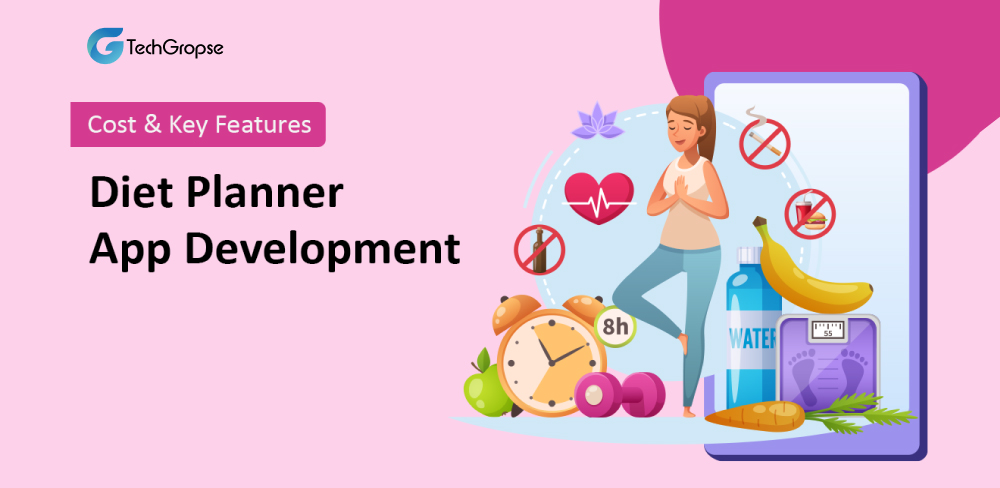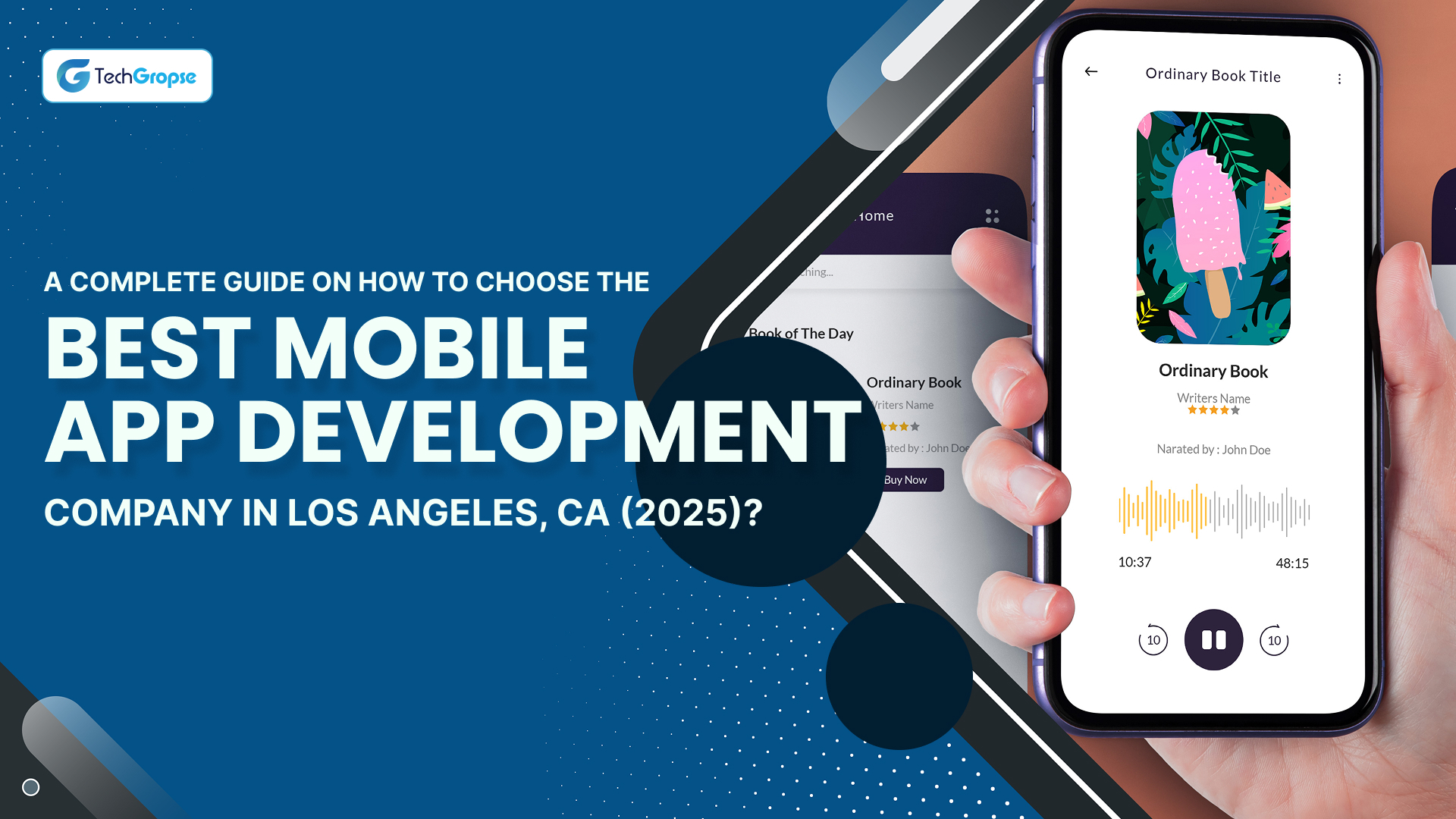Want to know Diet Planner App Development Cost?
Did you know? Saturated fat is responsible for bad cholesterol and is found in high amounts in products, including cheese, butter, red meat, etc.
Isn’t this a thought we would like to be more aware of? People are inclined toward using Diet Planner apps that come under healthcare and fitness app development.
Thanks to Diet Planner App Development such an app not only provides you with essential facts about diet and health but also analyses important nutrition content that your body requires.
The awareness of diet and nutrition amongst people has brought a noticeable surge in the demand for healthcare app development.
This blog is a brief approach to why you should invest in diet planner application development, its current market scenario its features, and the development cost.
What is a Keto Diet Meal Planner App?
To understand the hereunder content it is important that we begin with understanding what is the best diet and meal planner app.
A diet planner app, in today’s world, is a must-have app on the phone of a person who wants to stay healthy and fit.
Such apps help you to analyze the amount of nutrition content your body requires. This is not just an app, it’s a concept developed with technology to solve your problems such as not getting quality sleep, being unable to lose/gain weight, and achieving certain fitness goals.
The best diet and meal planner app will keep you motivated to focus on your diet and nutrition and stay healthy and fit.
There is various healthcare app development available in the market such as Rise, Lose it, Eat this much fashioned by Diet Planner App Development that assists people in achieving their fitness goals.
What do Market and Stats say?
The present market size for diet and nutrition apps is $3.9 billion, and according to analysts, this income will climb to $15.5 billion by 2028, with a 21.6 per cent compound annual growth rate.
The market size of diet and health-related mobile applications is in high demand due to a growth in the constant need for health and nutrition evaluation, fitness trackers, and exercise and weight loss sectors from numerous industries.
Following the release of COVID-19, these applications have sparked a surge in public awareness about people’s health and fitness.
People are increasingly likely to use smartphones in their everyday lives, therefore they are always seeking health and nutrition options as well as home exercise equipment to invest in (Apple Watch, Fitbit).
According to the report, the smartphone industry has grown at a 65 per cent annual pace and is expected to reach $6 billion by 2025.
Diet and nutrition applications use the latest-generation technologies such as AI and machine learning, as well as IoT, to provide clients with highly tailored solutions.
The in-demand requirements for these mobile applications include personalized diet charts, tracking heartbeat and footfall, training regimens, easy-to-follow food recommendations, one-to-one live health advisors, and social sharing tools.
MyFitnessPal (MFP) Inc., which helps users track their food and activity, is one of the biggest companies in the diet and nutrition app sector in 2020, with $6.7 million in sales.
Fitbit, Adidas, Azumio, Appster, Nike, and others are among the industry’s top participants in the Diet & Nutrition App market.
Learn More With How to Develop a Workout Streaming App Like Peloton?
Business models of an app for diet planner
- Self-Owned Diet Planning App: This sort of business model is confined to single-brand items or services and is utilized by a single person/owner to maintain track of his business.
- Food & Health Tracking App Aggregator:As the title indicates, the food and health aggregator app allocates a variety of brands across a single channel and receives a commission from them, as well as facilitating the holding of different owners with their services. Nutritionists, dietitians, and fitness centers are just a few of the specialties that complement one another within the same panel.
Monetization Strategies concerned with Diet Planner App Development
Once you’ve introduced your app to the public, the following step is to generate a lot of income and profit from it. Companies that do not match their mobile apps will experience a drop in revenue.
There are several revenue models to examine, and you should choose the one that is best for your company.
Let’s take a look at the various monetization strategies concerned with diet plan app development.
- Premium Membership: In the past, people had to pay a charge to obtain paid membership mobile apps. To respond to this strategy, make sure your software is very efficient and responsive, as well as up to par in terms of performance, to compete with freely available apps. My Diet Coach is one such app that charges users for services provided within their mobile app. Companies have implemented more complex tools for their customers, such as a calorie calculator, barcode scanner, in-app graphs, and awards.
- Sponsorship: Sponsors who wish to promote nutrition and diet-related apps can utilize this money generation technique. Businesses have their motives for wanting to engage with new audiences and grow their business.
- In-app advertisements: This is the ultimate revenue-generating monetization approach for people’s attention. However, strive to maintain such advertising in their proper locations to avoid wasting money on them. You may use a variety of ad formats, such as banner advertisements, video ads, native ads, and so on. An approach like this is used by Fooducate.
- The Freemium Business Approach: As the name implies, this model obtains free apps in order to reach a huge number of users. Because it is free, this strategy is one of the finest ways to attract a huge number of people. However, you may include a few premium choices in the app to provide your consumers with more sophisticated functionality. With the subscription edition, MyFitnessPal and Fooducate provide more value-oriented features for customers such as a nutrition dashboard, carb, and protein monitoring, food library, gluten-free diets, and more.
Market Leaders of diet planner Apps
Let’s look at the market leaders in the nutrition and diet app sector to see how productive and profitable they are. However, some models only provide one function, while others provide a variety of options.
- Lose It: This app, along with MyFitnessPal, is the most popular calorie tracker, with 27 million users. Many of the leading periodicals’ feeds, including The Wall Street Journal and CNN, have highlighted it. Many functions, such as daily calorie counting, nutrition tracker (protein, sugar, and carb), meal planning, and exercises, have been included in the app. Users may use GoogleFit to switch to their wearables.
- Eat This Much: This is a calorie-counting software that allows users to create customized monthly and weekly meal plans depending on their food choices, budget, and schedule.
- Rise: This is a sleep tracking software that users love to use to get a good night’s sleep. The rise can help you get a better night’s sleep and get the most strength for your body. Sleep debt and the circadian rhythm are two features that might help you get better sleep and more vitality.
Panel Features Provided by Diet Planner App Development
User’s Panel
- Registration: Users can register in this part by providing personal information such as their name, gender, age, weight, and height.
- Create Weekly Goals: This is the part where users may set weekly goals for themselves to measure their calorie intake and compare it to their previous consumption.
- Food Logs & Nutrition Value: Users may obtain daily calorie counts and keep track of meals and food consumed in the Food Logs & Nutrition Value section.
- Book your appointment: Users may plan and book meetings with their dietician to update or improve their diet charts based on their workout activities.
- Receive Information: Users will receive notifications about their daily fitness objectives and the foods they require in a certain time zone.
- Linking to Live Experts: Users may communicate with their nutritionists about their nutritional needs, share their thoughts on current meal plans, and have them adjusted if necessary.
Admin’s Panel
- Sign-up/Log-in: Admins can log in with their email ID or social networking account credentials in this part, just like they can in the user panel.
- User Manager: This tool allows the admin to keep a check on users that have registered with the diet planner app.
- Check Reservations: The admin may track the number of bookings received, as well as those that are finished or pending, through this area.
- Statistics: All-important charts and data about activities such as the number of user bookings for a new diet chart, prior plans, and official talks that took place with users are tracked and validated in this part.
- Email/Chat Support: The admin can interact with users and recommend required adjustments to diet plans for confirmation meetings in this part.
- Subscription packages: Admin maintains all monthly, quarterly, and annual subscription packages here. The administrator will be able to keep track of the most popular subscription offerings.
- Loyalty Programs: This area allows the administrator to keep track of the rewards and loyalty programs that were applied to his or her purchase, as well as the offers and services that were associated with it.
Team Structure Required for Diet Planner App Development
Creating an integrated and sophisticated technology mobile app, such as the Diet Plan app, necessitates a well-rounded team of professionals from a top application development company that can intertwine every aspect of design and development into the project.
- Project Manager: Oversee all mobile application projects and collaborate with the entire team to make sure the project is projected correctly. To reach the goal, you must have developed a well-curated document with every specification and answer.
- Developers: There are two types of developers available: front-end and back-end. Front-end developers work with HTML, JavaScript, React Native, and other front-end programming languages, meanwhile back-end developers work with databases and security using Python, MongoDB, and other back-end programming languages. Developers dispersed technology based on the platform, either Android or iOS. Swift and Objective-C are the most commonly utilized programming languages on the iOS platform.
- Designers: Graphic designers are present, as are UI/UX designers.
- Quality Testers: Quality Testers guarantee that every area of code and design is thoroughly tested. They assist in the investigation of the mistake.
Cost of Diet Planner App Development:
Mobile app development is charged on an hourly basis by mobile app development businesses and specialist mobile app developers.
Prices range from $200 to $550 in countries such as the United States and Europe. Eastern Europe has cheaper pricing than the rest of Europe, with rates ranging from $200 to $600 per hour.
In India, the price charged by Nutrition App Developer the best diet and meal planner app software ranges from $25 to $200 per hour.
As a result, when the total cost of developing a meal planning software is assessed, the typical price for a single platform (Android or iOS) ranges from $10,000 to $25,000.
However, if you decide to create a fully functional and polished mobile app the cost would rise to $40,000.
Hire healthcare app developers that can integrate your visions in form of robust features in your customized On Demand Dietitian App Development.
When estimating your budget, it’s also helpful to consider factors that influence regional pricing, such as typical Chicago App Development Costs.










